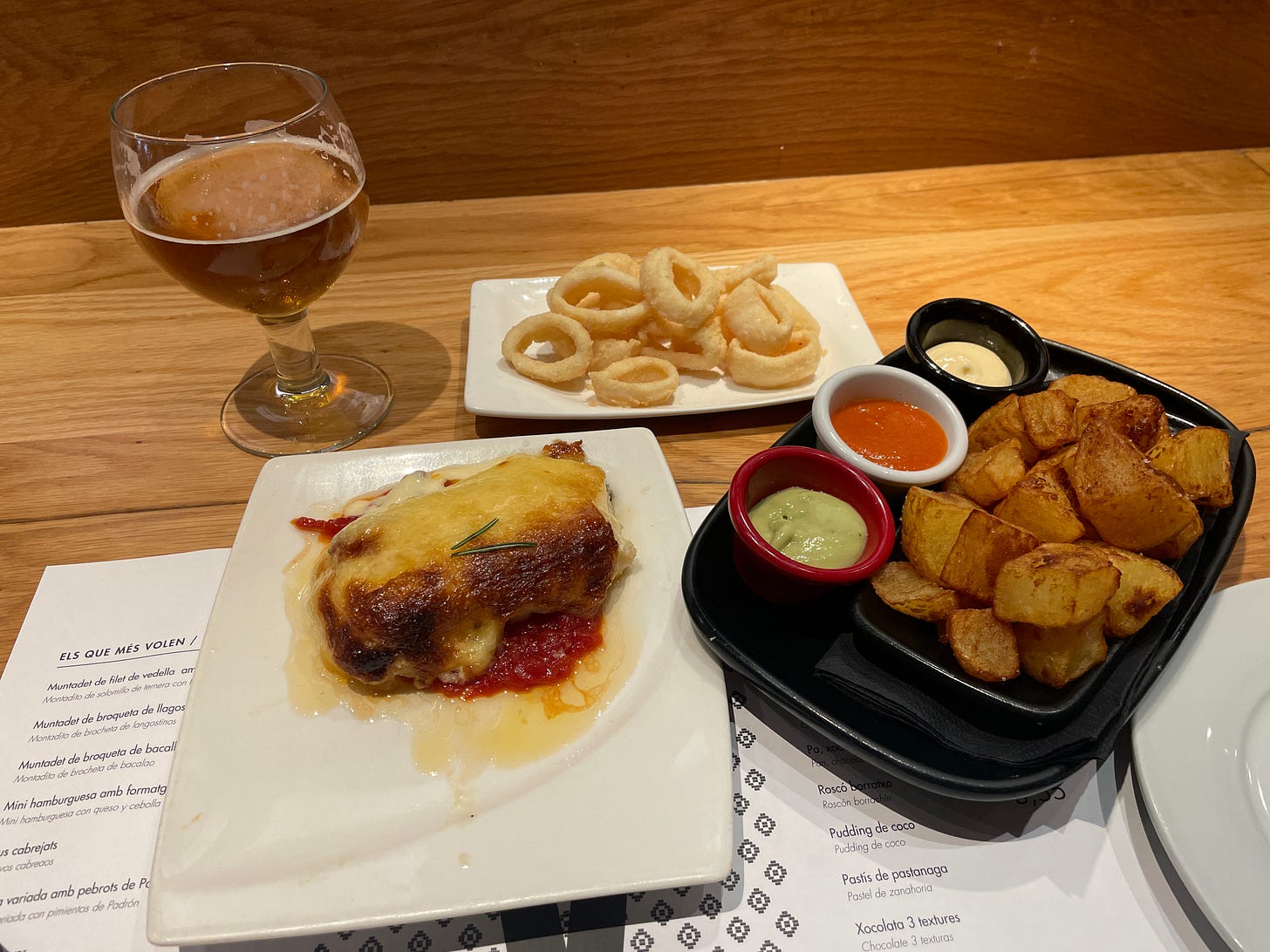
In theory, dining out isn’t a climate problem. After all, you have to eat, so why not do so with a good dish at your favorite restaurant?
But in reality, every time I dine out I contribute to a massive climate problem — one that accounts for a whopping 8–10% of the world’s annual emissions. That’s because I rarely finish what’s on my plate.
Food waste is a huge driver of climate change. And it happens every day in restaurants:
As much as 40% of food at restaurants never gets eaten, contributing to 33 billion pounds of food wasted by U.S. restaurants each year.
Part of the problem is that diners leave 17% of their meals uneaten and 55% of leftovers at the restaurant.
The solution seems simple: order less. In its list of food waste solutions, The New York Times offers that one, on top of planning meals, freezing foods, and being flexible on sell-by dates.
But ordering less isn’t as simple as it sounds — especially in the United States, where portion sizes have ballooned in recent years:
Since 1970, the average size of many food items has grown by as much as 138%, with Americans now consuming 23% more calories a day.
In that time, bagels and spaghetti have doubled in size, cheeseburgers have fattened by a quarter, and ice cream swelled by a third.
Compared to federal guidelines, it’s even worse: Cookies are 700% larger than standard portion sizes; pasta, 480%; steaks, 224%; and bagels, 195%.
So unless you’re relegated to the fries and mozzarella sticks of the appetizer menu (and even those portions can be huge), ordering less, at least in the U.S., isn’t super realistic.

This is an important point to make. Too often, the responsibility of climate change falls on the shoulders of individuals. And though most food waste does happen at the household level, that doesn't necessarily mean all the solutions are there, too.
In other words, if we only focus on individual decisions, we ignore some of the biggest structural problems in the food industry — many of which consumers have no control over.
Instead of asking consumers to order less or buy smaller sizes, we should ask restaurants, fast-food joints, grocery stores, and other points of purchase to change practices to encourage different behavior. For example, restaurants can…
Replace extensive menus with snack-focused or balanced-portions menus that feature portions aligned with nutritionists’ recommendations.
Offer meal bundles that feed more people or let consumers stretch out food across several meals.
Play up leftovers, with marketing like "dinner today, lunch tomorrow.”
Join apps like Too Good To Go, which offer deals on about-to-perish food.
Some states have passed laws that ban food waste altogether, forcing restaurants and grocery stores to find creative ways to solve the problem (though this strategy has been largely ineffective).
Like most climate solutions, however, I think the best solution is the simplest: Let people pick the amount of food they want to eat.
This means simply offering smaller plates that can be ordered like you would toppings or sides. That way diners who want to eat a lot still have that option, while those who don’t aren’t stuck with half a plate of untouched food.

So how does that look in practice? Let’s turn to Spain. For hundreds of years, restaurants in the Iberian Peninsula have offered tapas, small plates that can be eaten as appetizers or combined for a full meal.
And the great thing about tapas, like so many other climate solutions, is that they come with co-benefits. Smaller portions can reduce emissions, address obesity, and help restaurants save money by using less labor and fewer ingredients. Plus, such solutions are aligned with consumer preferences: Most diners want the option of smaller portions for less money, especially in these inflationary times.
Giving the people what they want, while cutting costs and helping the Planet? That sounds like a solution that’s too good to pass up.




How much of restaurant food waste is caused by perishable supplies spoiling before they are prepared?